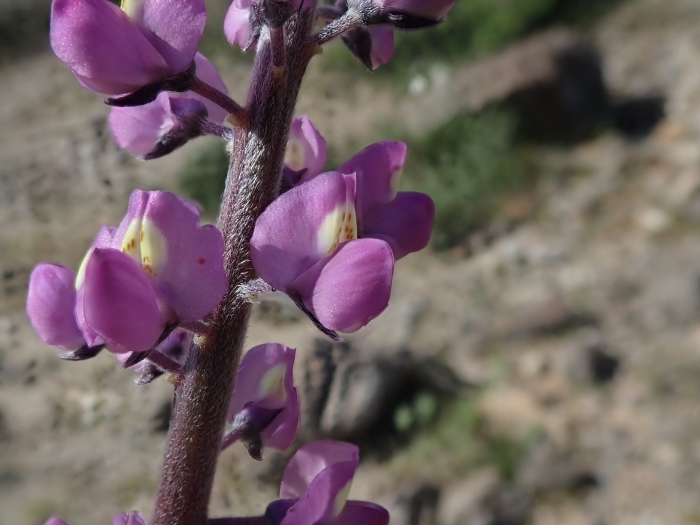Arizona Lupine
(Lupinus arizonicus)
Arizona Lupine (Lupinus arizonicus)
/
/

joergmlpts
CC BY 4.0
Image By:
joergmlpts
Recorded By:
Copyright:
CC BY 4.0
Copyright Notice:
Photo by: joergmlpts | License Type: CC BY 4.0 | License URL: http://creativecommons.org/licenses/by/4.0/ | Rights Holder: joergmlpts | Publisher: iNaturalist | Date Created: 2019-02-28T10:21:47-08:00 |























Estimated Native Range
Summary
Lupinus arizonicus, commonly known as Arizona lupine, is an annual herb native to the sandy soils of deserts in the SW. U.S.A. to NW. Mexico. It thrives in open, sunny areas, including desert scrub, sandy washes, and disturbed sites, typically below 3609 feet in elevation. Arizona lupine reaches a modest height of 4-20 inches, with palmately compound leaves that are indicative of the Lupinus genus. From late winter to early spring, it produces spikes of showy magenta to dark pink flowers, which are highly attractive to pollinators.
Arizona lupine is valued for its nitrogen-fixing ability, which can improve soil fertility, and its vibrant flowers that add a splash of color to desert landscapes. It is used in wildflower gardens, restoration projects, and xeriscaping. This plant prefers full sun and well-drained, sandy soils, and it is drought-tolerant once established. While it is not commonly affected by diseases, it can be susceptible to root rot if overwatered. Gardeners should be aware that all parts of the plant are toxic if ingested.CC BY-SA 4.0
Arizona lupine is valued for its nitrogen-fixing ability, which can improve soil fertility, and its vibrant flowers that add a splash of color to desert landscapes. It is used in wildflower gardens, restoration projects, and xeriscaping. This plant prefers full sun and well-drained, sandy soils, and it is drought-tolerant once established. While it is not commonly affected by diseases, it can be susceptible to root rot if overwatered. Gardeners should be aware that all parts of the plant are toxic if ingested.CC BY-SA 4.0
Plant Description
- Plant Type:
- Height: 0.5-2 feet
- Width: 0.5-1 feet
- Growth Rate: Rapid
- Flower Color: Pink, Purple, White
- Flowering Season: Spring, Winter
- Leaf Retention:
Growth Requirements
- Sun: Full Sun
- Water: Low
- Drainage: Fast
Common Uses
Bee Garden, Butterfly Garden, Drought Tolerant, Groundcover, Low Maintenance
Natural Habitat
Native to sandy soils of desert scrub, sandy washes, and disturbed sites in the Mojave and Sonoran Deserts
Other Names
Common Names: Desert Lupine , Coulter’s Lupine
Scientific Names: Lupinus arizonicus , Lupinus concinnus var. arizonicus , Lupinus sparsiflorus var. arizonicus , Lupinus sparsiflorus var. barbatulus
GBIF Accepted Name: